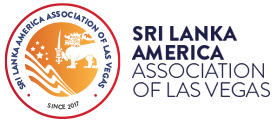Sri Lanka, officially the Democratic Socialist Republic of Sri Lanka, historically called Ceylon, is an island in South Asia. Sri Lanka has maritime borders with India to the northwest and the archipelago of Maldives to the southwest.
Sri Lanka’s documented history spans 3,000 years, with evidence of pre-historic human settlements dating back to at least 125,000 years. Its geographic location and deep harbors, especially the natural harbor of Trincomalee in the east coast, made it of great strategic importance from the time of the ancient Silk Road through World War II to present time when India, the United States and China diplomatically battle to gain influence in the Asia-Pacific region. Portuguese and The Dutch from 1505 through1896 administered the Maritime Provinces, and from then onwards to 1948, until Sri Lanka (Ceylon as it was known then) won independence, British ruled the entire country.
A 25,000 Square Mile nation just the size of West Virginia, Since Independence in 1948, Sri Lanka maintained a multi-party democratic constitutional government having had universal franchise, and periodic change of government, dates back to 1936.
A diverse and multicultural country, Sri Lanka is home to many religions, ethnic groups, and languages. In addition to the majority Sinhalese (74), it is home to large groups of Sri Lankan Tamils (11%), Tamils of Indian Origin (5%) and followers of Islamic faith (7%), and others. A remarkable religious harmony, the country is 68% Buddhist, 15% Hindu, 10% Christian and 7% of Islamic faith.
Sri Lanka has had a long history of international engagement,member of the United Nations and Commonwealth of Nations. It literary rate is amazing 98%, highest in the Asian Region.
U.S.-SRI LANKA RELATIONS
Relations between the United States and Sri Lanka are based on mutual interests and a shared commitment to the ideals of democratic governance. U.S. policy toward Sri Lanka is characterized by respect for its independence, sovereignty, and moderate nonaligned foreign policy; support for the country’s unity, territorial integrity, and democratic institutions; and encouragement of its social and economic development. The United States is a strong supporter of ethnic reconciliation in Sri Lanka following the end of decades of civil conflict in 2009. U.S.-Sri Lanka relations date back to the mid-1980s. An American, Colonel Henri Steele Olcott arrived in then Ceylon and founded many primier Buddhist schools in Colombo, Kandy and Galle. American evangelical Christian missionaries arrived in Ceylon in late 1800s; they established premier educational institutions in the Northern Province in Jaffna. The British introduced the Roman-Dutch legal system which governs the legal system to date.
The U.S. imports 27% of Sri Lanka’s total exports.
U.S. Assistance to Sri Lanka
The United States has delivered more than $2 billion in development assistance to Sri Lanka since its independence in 1948. Through the U.S. Agency for International Development (USAID), the United States seeks to broaden and accelerate economic growth, develop democratic institutions, and promote the reconciliation of multi-ethnic and religious communities in Sri Lanka.
The spectacular Island Sri Lanka
Sri Lanka’s big five The Blue Whale, The Sperm Whale, The Leopard, The Asian Elephant and the Sloth Bear, Eight UNESCO World Heritage Sites, documented history over 2000 years, a list of over 430 bird species including more than 26 endemic birds of Sri Lanka, historical sites, endless beaches, welcoming people, The Wonder of Asia, Sri Lanka is incomparable. Whether your intention of travel is for culture, nature, history, wildlife, or photography, Sri Lanka is the best answer.
The historical sites of Sri Lanka represent the remnants of the country’s ancient civilization, culture, traditions and philosophy. The Sri Lanka heritage is largely reflected in Sri Lankan ruined cities, temples, palaces, dagobas (pagodas), parks and paintings. Sigiriya Rock Fortress (below) is one of many cultural sites.
Kandy – The Ancient Hill Capital City
The royal city of Kandy was the last seat of the Sinhala kings and famous for its Tooth relic of Buddha and the Esala Perahera a historical parade. It is also one of the noted historical places in Sri Lanka. Kandy was declared as a world heritage site by Unesco in 1988. The most popular historical name is Senkadagala or Senkadagalapura, and the English name Kandy is derived from an anglicized version of the Sinhalese Kanda Uda Rata (meaning the land on the mountain). Kandy is one the Sri Lanka’s beautiful places.
